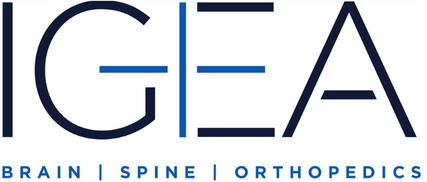MIGRAINE SPECIALISTS IN NEW JERSEY & NEW YORK
A migraine is not just a form of a bad headache. It is its own category, a group of debilitating symptoms of neurological origin.
Current science has upended the prior belief that a migraine is the result of constriction and dilation of blood vessels in the head; thus treatments were meant to relieve that process. Current understanding is that migraine is a neurological disorder, involving nerve pathways and brain chemicals.
One thing is for certain: migraines are extremely common. They affect 39 million men, women and children in the United States and one billion people worldwide.
Consider these facts about migraines.
- A migraine is the 3rd most prevalent illness in the world.
- Nearly one in four U.S. households include someone with a migraine.
- Amazingly, 12 percent of the population – including children – suffers from a migraine.
- 18 percent of American women, 6 percent of men, and 10 percent of children experience migraines.
- A migraine is most common between the ages of 25 and 55.
Migraines tend to run in families. About 90 percent of migraine sufferers have a family history of a migraine. The offspring of one parent with migraines has about a 50 percent risk of developing migraines. However, heredity is not the only cause. According to studies, environmental factors also play an important role.
The International Headache Society divides migraines into two categories. These are:
- Migraine with aura – An aura is a visual disturbance, such as flashing lights, flickering lights or blind spots. Other aura symptoms can include tingling, dizziness, pins and needles and weakness on one side of the body. Auras, which last anywhere from five to 60 minutes, include additional symptoms experienced together with symptoms of a migraine without aura.
- Migraine without aura – Seventy to 90 percent of migraine suffers experience this type of migraine. This form, which can last from four to 72 hours, includes throbbing or pulsating pain, usually on one side of the head. Sufferers may have light or sound sensitivity and feel sick. They may vomit or have diarrhea.
HOW DOES A MIGRAINE DIFFER FROM A HEADACHE?
Although migraines are often erroneously called headaches, there are some very specific differences between the two. They are triggered by different factors and include different symptoms. Headaches are caused by the contraction of muscles between the head and the neck. They can range from mild to severe pain, usually occurring on both sides of the head. There are various categories of headache, including tension, cluster or sinus headaches. Headaches can occur for a variety of reasons, from injuries to other medical conditions. Migraines have other symptoms in addition to head pain (e.g. nausea, dizziness, sensitivity to light and sound) and are usually on one side of the head.
SYMPTOMS
Migraine symptoms can include those that occur before the headache (called the “prodrome” phase). They may occur one or two days before the onset of the migraine and are present in about 60 percent of migraine sufferers. These include:
- Confusion
- Constipation
- Depression
- Difficulty concentrating
- Excessive yawning
- Head and neck muscle stiffness
- Increased urination
- Irritability
- Restlessness
- Unusual food cravings
Symptoms which occur during a migraine include:
- Aura (bright, flashing lights, dots or blind spots)
- Blurred vision
- Dizziness
- Eye pain
- Fatigue
- Lightheadedness, possibly fainting
- Loss of appetite
- Nausea and vomiting
- Sensitivity to light, sound or odors
- Severe pounding/throbbing pain on one or both sides of the head
CAUSES/TRIGGERS
Although not completely understood, some factors can cause or trigger migraines. Among them are:
- Changes in sleep patterns – Too little or too much sleep, jet lag or other changes in routine
- Drinks – Highly caffeinated drinks or alcohol, especially wine
- Foods – Processed and salty foods and aged cheeses. Food additives such as MSG and the artificial sweetener aspartame
- Intense exercise – or other physical exertion
- Medications – Oral contraceptives, HRT (hormone replacement therapy) and vasodilators, such as nitroglycerin
- Sensory overload – Bright lights or strong sun, loud sounds and strong smells
- Stress – An exacerbating factor for migraines
- Women’s hormonal changes – Fluctuations in estrogen; pregnancy or menopause
TREATMENTS
Medications are a common method for treating migraines. Medications for migraines fall into two categories: abortive, which is meant to stop a migraine after it starts; prevention, to avoid the onset of a migraine.
BOTOX FOR MIGRAINES
BOTOX® is a prescription medicine for chronic migraine that is injected in various spots on the head and face with a small needle (said to feel like tiny pinpricks). It is indicated for adults (over age 18) who have 15 or more migraine days per month. BOTOX claims the treatment prevents an average of eight or nine headache days per month. This 15-minute procedure, done in the doctor’s office, is administered every 12 weeks. The prominently documented Two Phase 3 Research Evaluating Migraine Prophylaxis Therapy (PREEMPT) trials have found BOTOX to be an effective treatment for migraines.
KEEPING A HEADACHE DIARY
Keeping a diary of migraine incidents, a commonly recommended practice, is helpful to both patient and physician. The more detail the diary includes, the more efficient a tool it can be for both diagnosis and treatment and of a person’s own understanding of their condition. Some relevant details include onset, symptoms, intensity/duration, conditions before onset (six to eight hours before), food, sleep and medications (with any side effects).
IGEA Brain, Spine & Orthopedics offers specialized treatment for migraines and headaches. Consult our experts today to be evaluated for this treatment.

